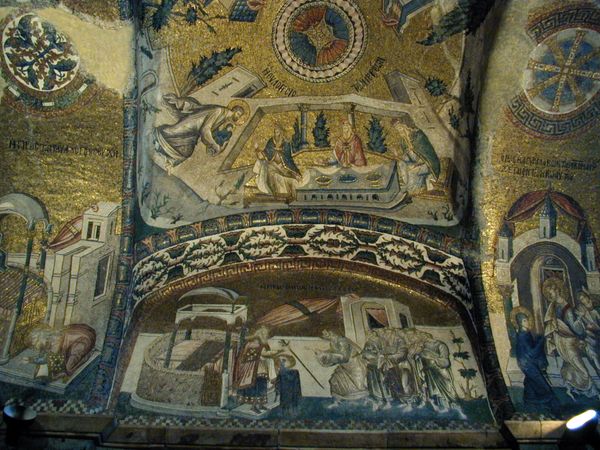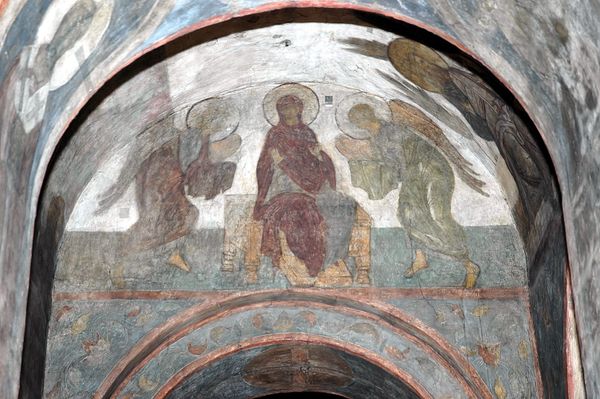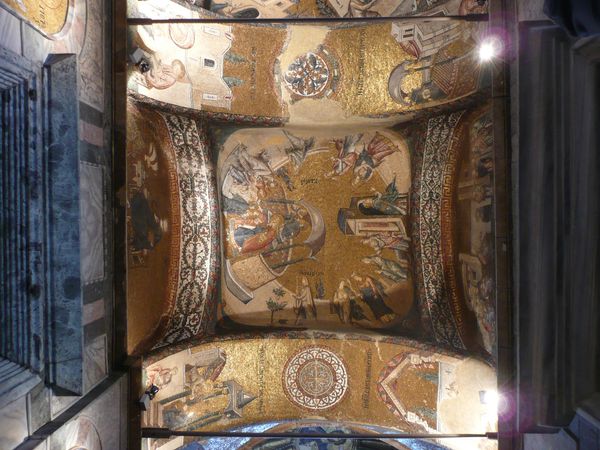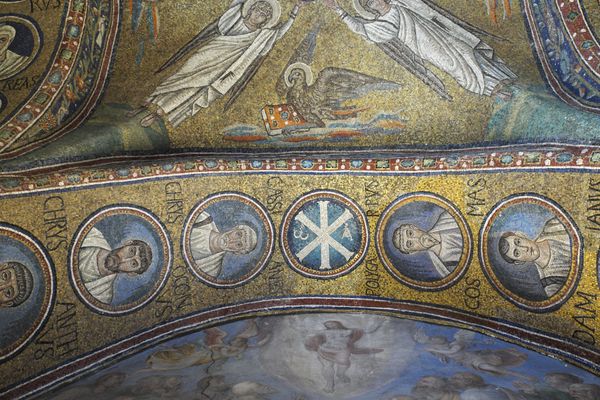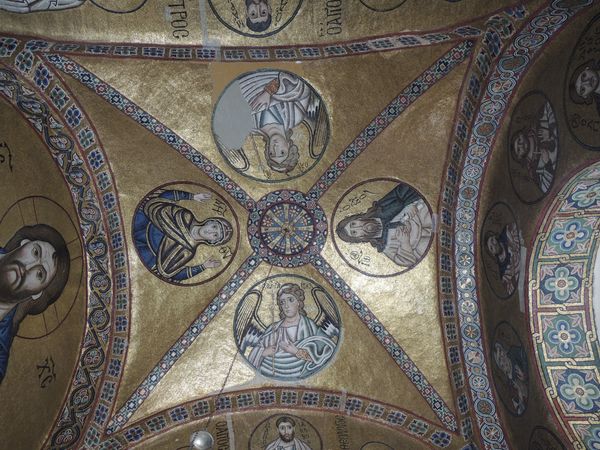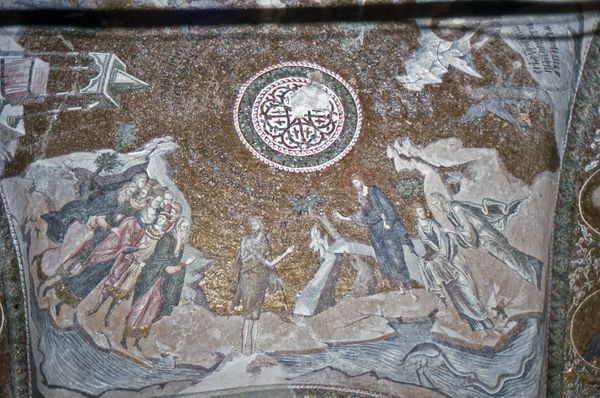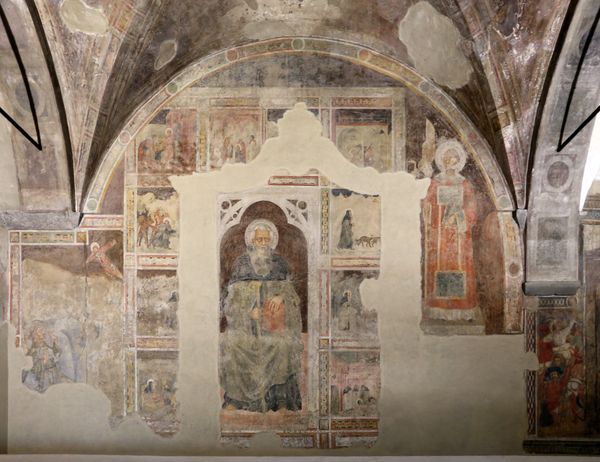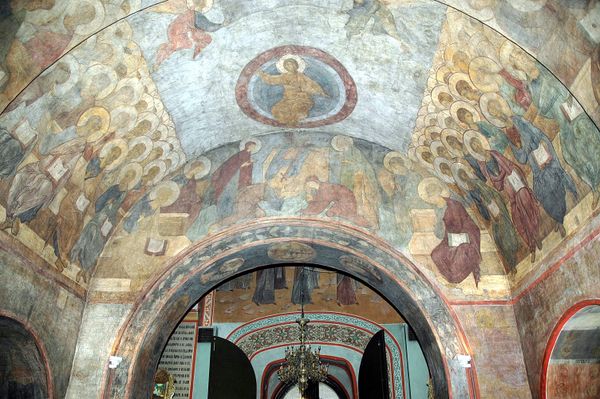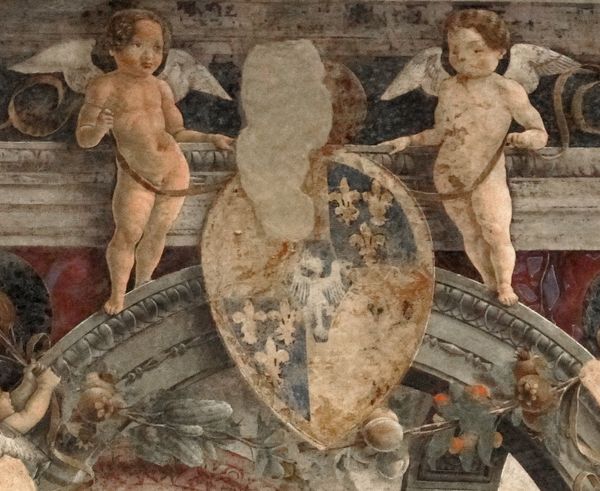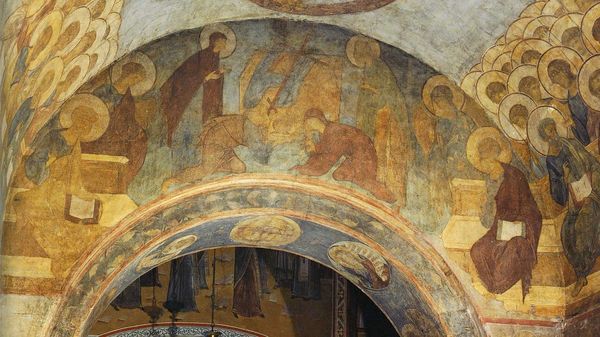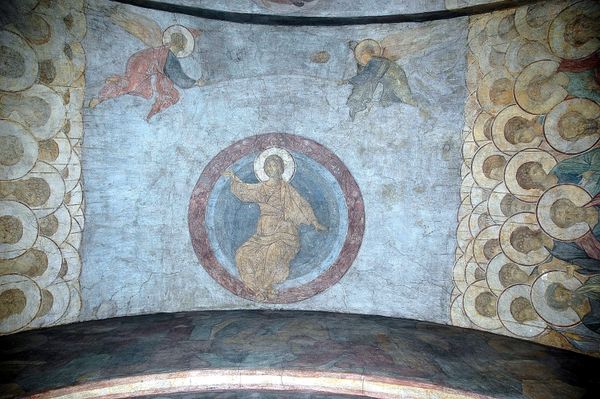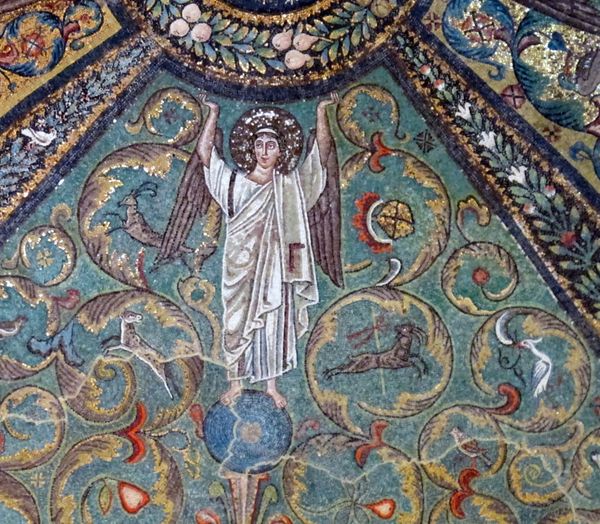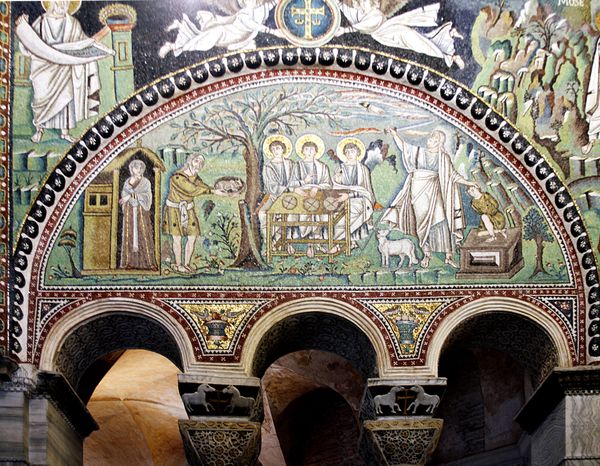
painting, fresco, architecture
#
narrative-art
#
painting
#
figuration
#
fresco
#
arch
#
christianity
#
history-painting
#
italian-renaissance
#
architecture
#
christ
Copyright: Public domain
Curator: This fresco is by Bernhard Strigel. Created around 1510, it is entitled "Sacrifice of Isaac, and Transfiguration." Editor: It's almost dreamlike. There’s this pale coloration overall, and the linear structure, especially that framing, makes me feel almost as if I'm gazing into a kaleidoscope. How did it end up in the format we see here? Curator: That's part of the story. This image comes from a vault in a chapel and thus shapes how the stories are framed. Considering the chapel setting, and Bernhard Strigel's wider career painting religious themes, it's interesting to note that the vaulting emphasizes an architectural element, integrating art into a public context to reinforce beliefs and solidify socio-political ideologies prevalent during the Renaissance. Editor: It's difficult to divorce the narratives being portrayed here from the actual work involved in creating it. Think of the labor: mixing pigments, plastering walls, and carefully plotting and executing these scenes overhead! I wonder, too, about the social dynamics of Strigel's workshop and how many hands contributed to its final manifestation. Curator: Certainly. What about the viewers of the piece at its origin? The placement of this artwork was deliberately intended to guide moral and spiritual contemplation. Its intended audience needed to "read" those moral precepts encoded in the scenes of Isaac’s sacrifice and Christ’s transfiguration, right? Editor: Right, and there’s something poignant about these frescoes as physical records of the beliefs that informed the society around it. The artist had to understand the material constraints of fresco while negotiating all the intellectual demands. Curator: Considering those Renaissance sensibilities, this piece encapsulates that pivotal moment in European history where religion, art, and politics converged to forge a distinctive visual culture, it's clear the fresco acts as both a demonstration of artistic innovation and a mirror reflecting the complexities of its own time. Editor: Indeed. I find it quite remarkable to look back through all the material aspects, social underpinnings, and production practices of creating something such as this to see a fuller view of our past.
Comments
No comments
Be the first to comment and join the conversation on the ultimate creative platform.
